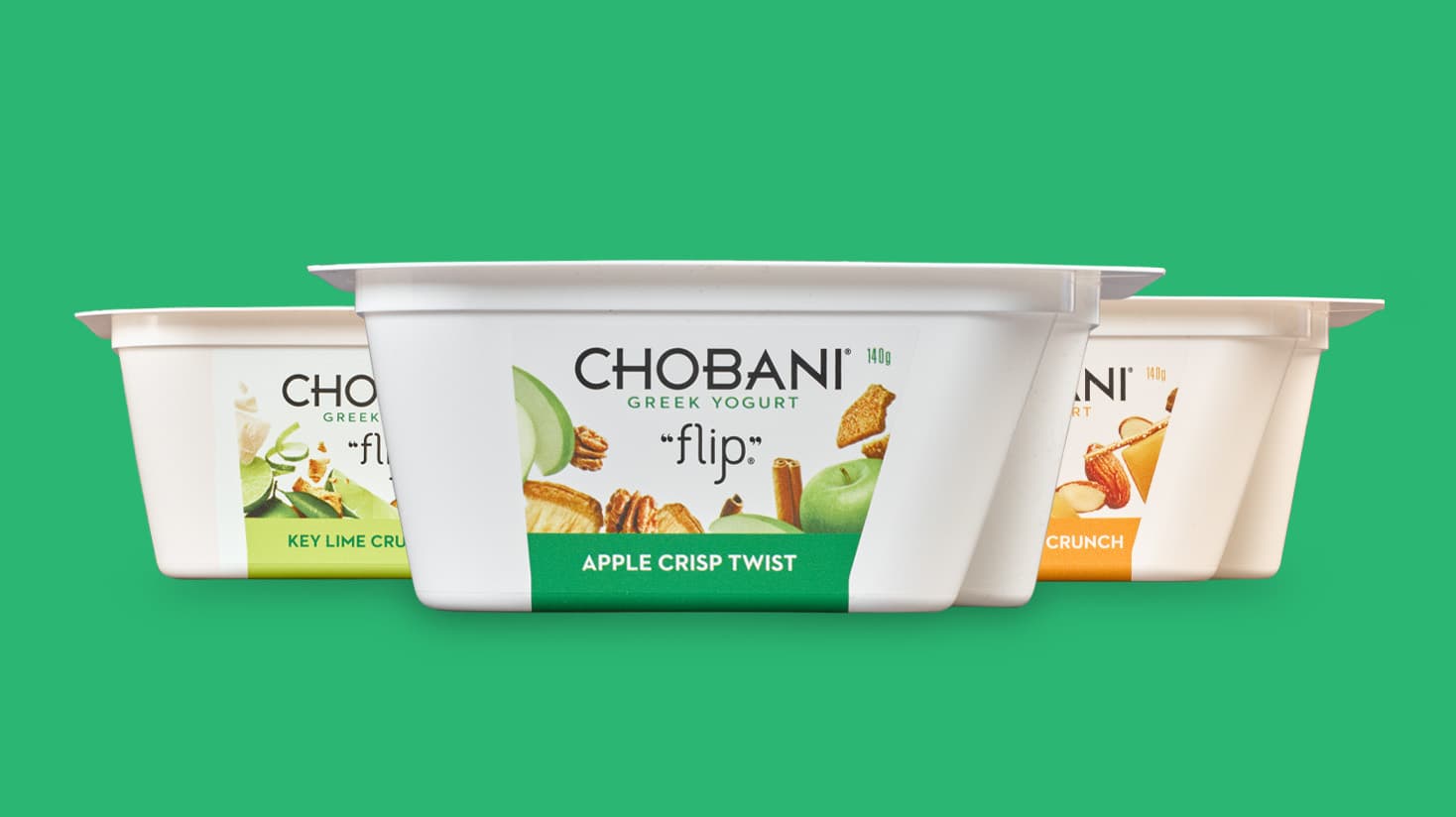Cases
Chobani Greek yogurt: ready in a ‘flip’ thanks to specialized IML packaging
Who doesn’t like the combination of fresh Greek yogurt with a dry, crunchy mix? Brand owner Chobani was interested in getting this product on store shelves as a single product, but with both ingredients clearly separated. It was a highly complex technical challenge, but thanks to the possibilities of IML, an attractive and flexible solution was developed.

Share
Packaging with two compartments
Chobani yogurt was created in 2005 when the founder, Hamdi Ulukaya, who lived in the United States, was unable to find the high-quality Greek yogurt he grew up eating. He decided to produce it himself and the product was an immediate hit in the US, followed by Australia. In 2017, Chobani Australia launched the Flip product range, featuring products that combine Greek yogurt with a dry, crunchy mix-in. “We needed smart packaging with two compartments, so the consumer could combine the ingredients for consumption by ‘flipping’ the container,” explains John Williams, New Product Development Manager, at Chobani. “Chobani Flip is perfect for people who want a better afternoon snack that satisfies their sweet and crunchy cravings, but isn’t as naughty as chips or a chocolate bar.”
Flip design is one of a kind
In developing the IML packaging, Chobani decided to team up with Australian injection molder PakPot, which specializes in turnkey IML solutions for FMCG brand owners. Their goal? To develop IML packaging that makes the difference on store shelves and offers brand owners a unique point of differentiation.
Joe Matto, CEO of PakPot, explains, “This flip design is one of a kind. Why? Because it’s a twin injected polypropylene tub with a live hinge that is decorated with a Y-shaped IML label, with the injection gated through the label by means of a hole. It took approximately 12 months between the initial idea and the finished product. We needed that time to conduct extensive testing. There are comparable IML products with two compartments and wraparound IML labels on the market. But, for this product, we designed a Y-shaped IML label: the legally required information is stated on the bottom of the packaging, while the sides and top are used for marketing and branding purposes.
The challenge was to properly analyze the polymer flow, since double injection automatically causes a stress line where the two materials meet (a ‘cold weld stress joint is formed’). It was critical that the stress line did not end up along the live hinge of the packaging.
Unique Y-shaped IML label with drill hole
MCC Verstraete’s greatest accomplishment in this project? The development of a Y-shaped IML with a central drill hole that allows the injection molder to inject in the center section without obstructing a substrate, so that the end result is of excellent quality and with minimum waste production. They also helped us from the very start with the development and testing of the right labels.
Joe Matto, CEO of PakPot
John Williams from Chobani adds, “During the in-mold labeling process, packaging is produced and decorated in a single step. So there is no need to store blank packaging, thereby eliminating both storage and transport costs.”